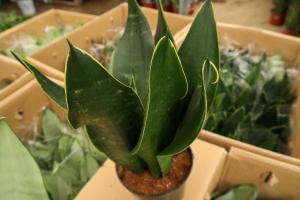How to Plant Garlic in Michigan
Garlic is a versatile and flavorful crop that is easy to grow in Michigan. Whether you're an experienced gardener or just starting out, planting garlic can be a fun and rewarding experience. Here's a step-by-step guide on how to plant garlic in Michigan:
Preparing the Soil
The first step in planting garlic is to prepare the soil. Garlic prefers well-draining soil that is rich in organic matter. Start by clearing the area of any weeds or debris. Next, you'll want to work some compost into the soil. Spread a layer of compost over the area and use a garden fork to work it in. The goal is to create a loose, fertile bed that will allow the garlic bulbs to form and grow easily.
Choosing and Preparing Garlic Bulbs
Selecting high-quality garlic bulbs is crucial for a successful crop. Choose bulbs that are firm and plump. Avoid bulbs that are soft or have moldy spots. Before planting, separate the bulbs into individual cloves. Leave the papery skin on the cloves intact. To help prevent disease, you can soak the cloves in a solution of one part vinegar to ten parts water for ten minutes. Once the cloves are dry, they're ready to be planted.
Planting Garlic
Plant garlic in the fall, ideally in October or November when the soil temperature is between 50-60 degrees Fahrenheit. Dig a hole about two inches deep and place a clove in the hole, pointy side up. Space the cloves about six inches apart. Once all the cloves are planted, cover them with soil and then mulch with a layer of straw or leaves. The mulch will help insulate the bulbs over the winter.
Caring for Garlic
Garlic requires very little care once it's planted. Water the cloves immediately after planting and then again if the soil becomes dry. Otherwise, the bulbs should get enough moisture from rain and snow. In the spring, remove any mulch that was used to cover the bulbs. You can also sprinkle nitrogen-rich fertilizer around the plants to encourage growth. Garlic bulblets, or scapes, may form in late spring or early summer. You can trim these off to redirect the plant's energy into bulb formation.
Harvesting Garlic
Garlic is typically ready to harvest in late June or early July. The signs that garlic is ready to be harvested include yellowing leaves and drying stems. Carefully dig up the bulbs with a garden fork or shovel. Be gentle, as the bulbs can be easily damaged. Once the bulbs are harvested, they need to be cured before storing. This involves leaving them in a warm, dry area with good ventilation for a few weeks until the outer skin is dry and papery.
In conclusion, planting garlic in Michigan is an easy and rewarding process. Be sure to prepare the soil, choose high-quality bulbs, plant in the fall, and care for the garlic throughout the growing season. With just a little bit of effort, you'll have a bountiful crop of delicious garlic to enjoy!

 how many times do yo...
how many times do yo... how many planted tre...
how many planted tre... how many pine trees ...
how many pine trees ... how many pecan trees...
how many pecan trees... how many plants comp...
how many plants comp... how many plants can ...
how many plants can ... how many plants and ...
how many plants and ... how many pepper plan...
how many pepper plan...
































